The current report by the Royal United Defense Research Institute (RUSI) is not the first major study on this topic. Not so long ago, the institute's experts published an analysis of Russian "hybrid" operations and an overview of the threats to the Ukrainian nuclear infrastructure.
The authors of the study, based on trips to Ukraine, as well as interviews with soldiers and officers of the Armed Forces of Ukraine, studied how Russian troops are trying to adapt to changing conditions. The report deals primarily with changes at the tactical (grassroots) level. Separate chapters are devoted to Russian infantry, artillery, armored vehicles, aviation, etc.
Infantry: from "assault" to "expendable"
By the beginning of the invasion of Ukraine, the Russian ground forces were mostly classic mechanized units organized into battalion tactical groups (BTGr). However, as Rob Lee and Michael Kofman wrote , the structure of the Russian units did not have enough infantry, which did not allow them to provide cover for tanks in battle, and the armored personnel carriers turned out to be ineffective due to the lack of experience of commanders. Having suffered heavy losses in the battles of 2022 and replenished during the mobilization period, the Russian infantry has changed dramatically.
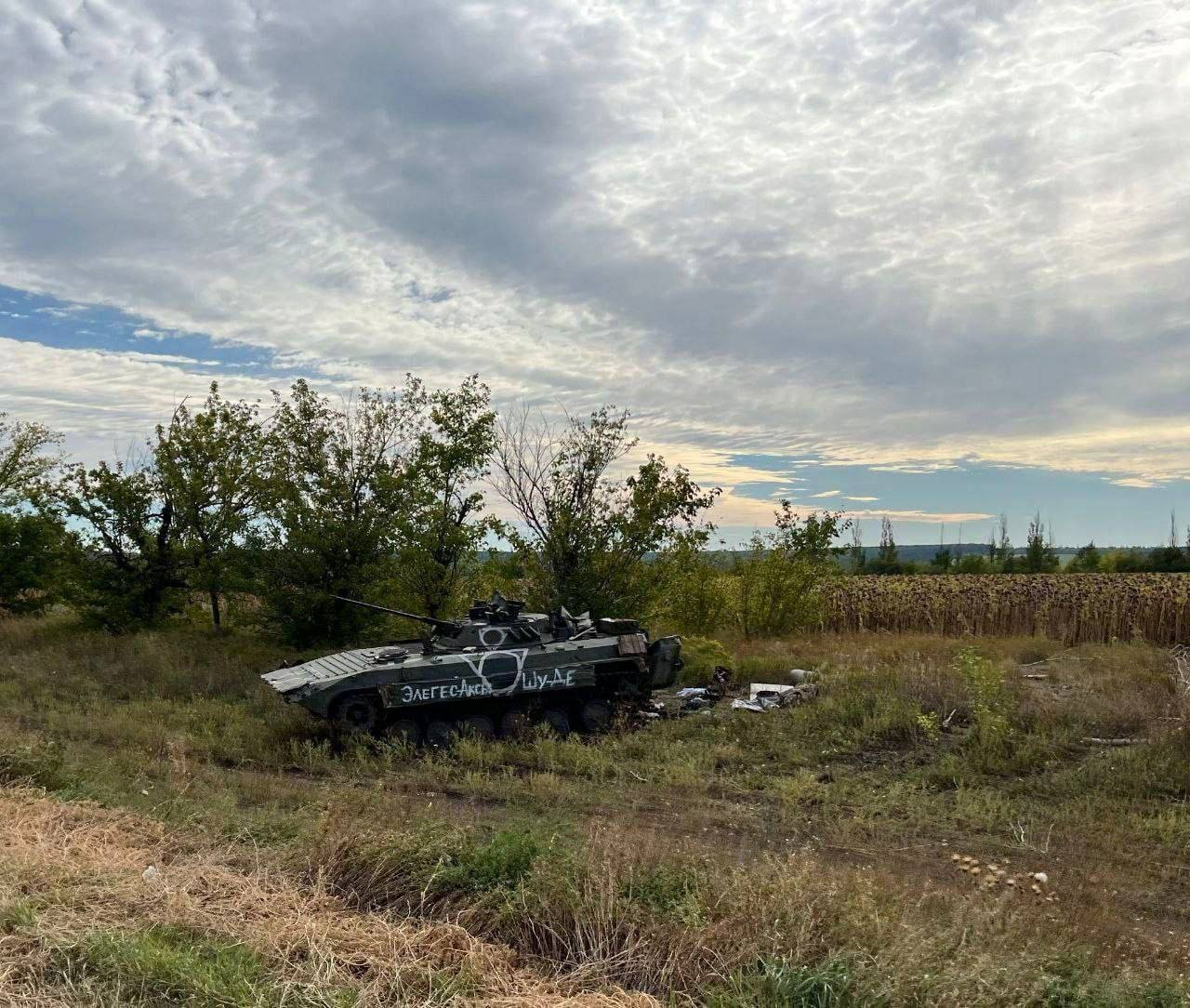
The report says that the infantry was divided into four categories – "linear", that is, "old" mechanized units, which are now mainly used to hold the defense, "specialized" (snipers, crews of anti-tank systems, ATGM operators, etc.), "assault" (designed to storm and capture enemy positions) and "expendable", or "one-time" (used to deplete the defense of the Armed Forces of Ukraine and open firing positions).
Little is known about the state of affairs in the "linear" infantry – at least until the Armed Forces of Ukraine begin to seriously break through the Russian defenses. An example of “specialists” is the operational-combat tactical formation “Kaskad” (formerly part of the “People’s Militia of the DPR”), which actively uses reconnaissance drones and kamikaze drones . There, according to rumors, the children of Russian officials are serving in comfortable conditions, wishing to earn the status of "members of the NWO." Often they serve as drone operators, which the Russians are increasingly using – over the zone of intense hostilities, according to the report, often 20 to 50 drones fly from both sides for 10 kilometers of the front.
Russian "assault" infantry has its roots in the First World War, when the Germans were developing tactics to break the positional stalemate. Assault units were used in the Red Army during World War II and in both Chechen wars. The principle of organizing such formations has not changed for more than a hundred years: fighters operate in small groups, clearing individual positions and buildings, the main emphasis is on personal training and superiority in firepower (due to, for example, grenades and mortars).
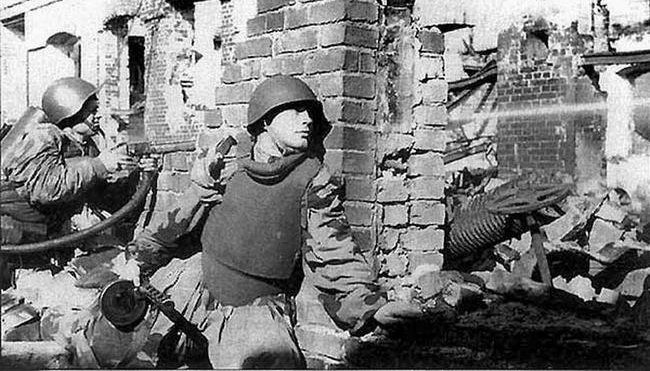
The most famous Russian “stormtroopers” are Wagner PMC mercenaries who came to Ukraine with experience in fighting in Syria and Libya and took part in the assaults on Popasna, Uglegorsk TPP and Bakhmut. RUSI believes that units of the Marine Corps and the Airborne Forces are also considered "assault" – the latter, for example, in the winter and spring of 2023, were engaged in assault operations in the forest southwest of Kremennaya. However, Storm detachments are also formed in ordinary, “linear” units – an officer of the Armed Forces of Ukraine, known under the nickname Tatarigami_UA, wrote about their structure and training .
The appearance of "expendable" infantry in RUSI is called a "cynical, but consistent" solution to the problem of insufficient training of Russian reinforcements. Its main sources are mobilization (first in the " republics " of Donbass, and then in Russia ) and the recruitment of prisoners (formerly in the Wagner PMC , and later in the Ministry of Defense ). Most often, "consumables" are sent into battle with little or no training and without weapons, except for small arms. It is about such formations that the most complaints are received by the mobilized themselves and their relatives.

As stated in the RUSI report, "expendable" infantry is always sent into battle first, often under the influence of amphetamines and other drugs – this is stated by the Ukrainian military both in interviews with the authors of the report and in open sources . Groups of mobilized or prisoners advance one after another, suffering huge losses, until they manage to identify weaknesses in the Ukrainian defense or gain a foothold closer to the positions of the Armed Forces of Ukraine, digging trenches for "specialists" and "stormtroopers" – this tactic was nicknamed " meat assaults " in the Russian army. ". Then, after artillery fire, the assault infantry moves into position, trying to attack from the flanks and "roll up" the enemy's defenses. If successful, the captured trenches are occupied by "linear" infantry.
“Expendable” Russian mobilized complain about being sent for an assault near Donetsk without preparation:
Such a cynical tactic is bearing fruit: despite the monstrous losses of "consumables", "specialists" and "attack aircraft" are subject to fewer risks, which means they retain combat experience. However, as the report says, it also happens that as a result of miscalculations or poor intelligence, the assault groups themselves suffer significant losses. Moreover, uneven training often blurs the difference between categories of fighters (for example, recently the so-called “Storm Z” units of the Ministry of Defense began to be staffed with prisoners and sent into battle without much training).
Speaking about the Russian infantry on the defensive, the authors of the report note that the Russians quite quickly dig in on freshly occupied positions (it takes 12 hours to equip a company stronghold), mine the approaches to the trenches, and in case of loss of positions, inflict artillery strikes on the advancing and often boldly counterattack.
Russian defensive position in the Zaporozhye direction:
At the same time, the report notes that, apparently, the morale of the Russian infantry leaves much to be desired. The authors draw this conclusion, in particular, from the increase in cases of unauthorized abandonment of units , as well as situations when Russians leave their comrades on the battlefield. On the defensive, however, Russian forces remain relatively resilient, albeit suffering from low-level command and a lack of horizontal communication between units, which can lead to chaos and loss of coordination during the Ukrainian offensive.
Engineering troops: unreasonably little attention
According to the authors of the report, the Russian engineering troops are given unreasonably little attention, although, unlike other branches of the military, they basically cope with their tasks of mining and equipping long-term defense lines. The principle of their creation has not changed much since the Cold War – positions in several lines are punctuated by obstacles, such as anti-tank ditches or "dragon's teeth". Strong points are equipped in forest plantations and on hills so that the open space in front of them can be shot through. On the third line are positions for reserves and armored vehicles. Command posts are most often created underground and concreted. In front of the lines of defense, especially in natural "bottlenecks" where the enemy will have to accumulate, minefields are created.
The construction of one of these defensive lines in the Tokmak area of the Zaporozhye region was analyzed in detail by OSINT analyst Pasi Paroinen:

The report also notes that the Russians are good at building bridges. The crossings are deployed quite quickly, and there is clearly no shortage of pontoons (although the crossing operations themselves, in the words of the authors, “demonstrate serious shortcomings” – probably, they mean, among other things, the failure of crossings in the area Moshchun near Kiev and Belogorovka , Luhansk region). The Russians are so confident in their capabilities that they destroy bridges behind Ukrainian lines if they can, not bothering to save them for their own offensive, because they can always build a new one. For example, most recently, Russian troops destroyed the dam of the Karlovsky reservoir, which supplied the Ukrainian forces in the Donetsk region, jeopardizing three villages.
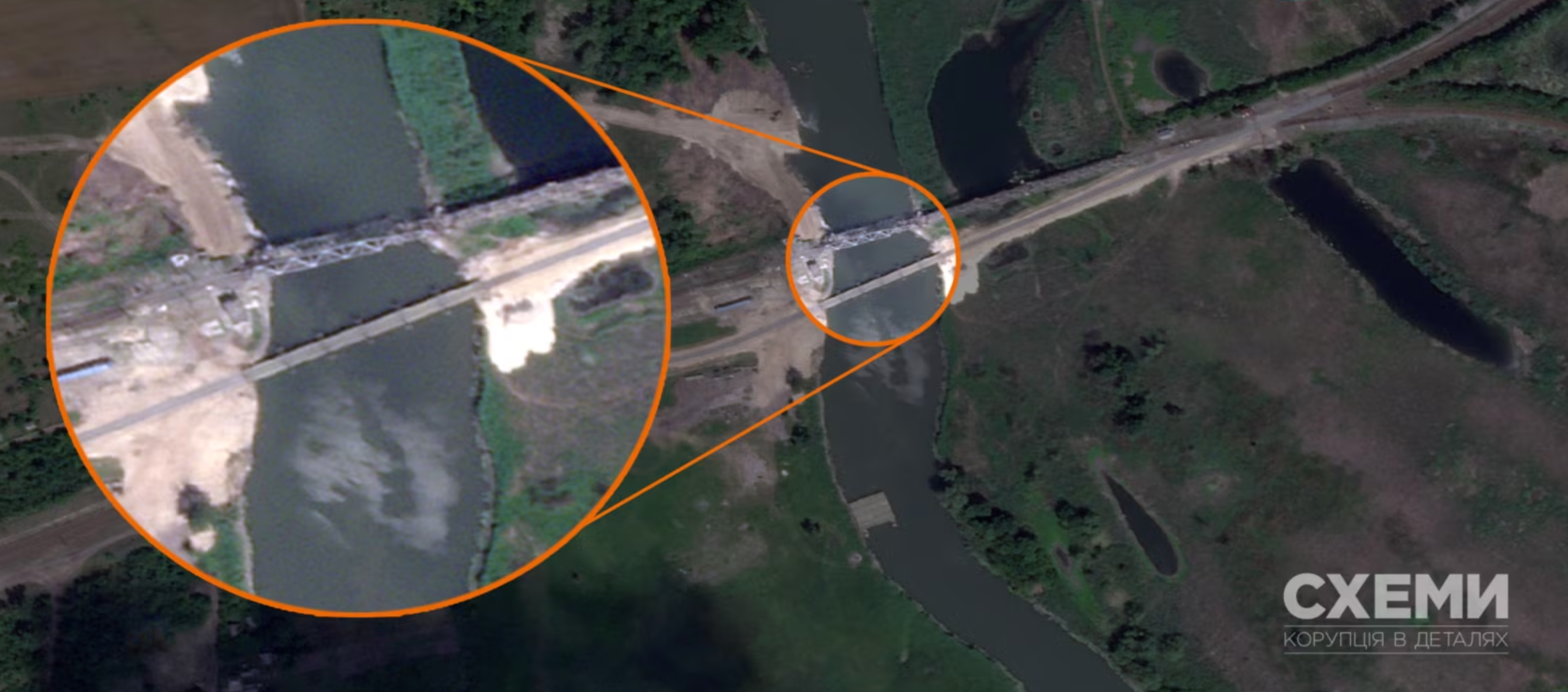
Artillery: Shell Hunger Makes Changes
Barrel and rocket artillery are the basis of the foundations of the Soviet, and then the Russian army, starting at least from the Second World War. The Russians, according to the RUSI report, still have the greatest impact on the battlefield with its help, but the tactics of using artillery in the Russian army have changed a lot. Not least of all, this is due to the “shell hunger” – if in 2022 the Russians fired from 20 to 60 thousand shells per day, now the number of shots rarely exceeds 24 thousand per day. In some areas, this difference can be even more striking. So, Andrew Perpetua, a Ukrainian Twitter user familiar with the situation at the front, wrote in December last year that the density of Russian fire in Bakhmut was ten times less than it was in Popasna.
According to the Ukrainian estimate, which is given in the report, Russia now produces about 2.5 million shells per year, and this number may increase. However, it still does not cover current needs – in 2022, Russian artillery spent 12 million shells, and this year, at the current rate of fire, it should fire 7 million. Launches of multiple launch rocket systems, which were actively used at the beginning of the invasion, have become significantly less may indicate a shortage of ammunition. In addition, the Russians can no longer accumulate shells near the front line due to HIMARS MLRS attacks on ammunition depots.

The authors of the report identified the most diverse forms of adaptation of Russian artillery to new conditions. The tactics of "roaming gun", "wandering platoon" and "umbrella cover" allow you to concentrate strikes and at the same time move away from Ukrainian counter-battery fire. Particular attention is paid to "immediate value" and "volley weight" – the shelling should be as timely as possible (for example, immediately before the attack) and concentrated in time. Also, the Russians began to concentrate artillery in artillery tactical groups (and not scatter it on the armored personnel carrier, as at the beginning of the invasion) and more actively use "reconnaissance and fire contours" based on Orlan-10 drones and commercial drones, which should speed up the reaction time from detection before hitting the target. In addition, the Strelets automated control system, which Russian gunners in February 2022 for the most part did not have or ignored, began to be used more widely. Finally, Lancet kamikaze drones and laser-guided Krasnopol guided artillery shells are increasingly used for counter-battery combat (the target is “illuminated” with a laser by the Orlan-30 drone – Ukrainians shoot them down from time to time).
The defeat of the Ukrainian artillery installation with a high-precision 152-mm projectile "Krasnopol":
One of the important points highlighted by the authors of the report, which may affect the Ukrainian offensive, is that the Russians actively use artillery not only in the offensive, but also in defense. There are known cases of fire damage to Ukrainian equipment at the starting positions for the attack. It happens that the Russians deliberately leave a position in order to later launch an artillery strike on the enemy forces that occupy it – the consequences of the use of such tactics recently demonstrated (carefully, the video may be shocking) during the Ukrainian counterattacks near Bakhmut.
Armored vehicles: "tanks don't fight tanks"
At the beginning of the war, Russian troops used armored vehicles in company groups as part of the BTG for strikes to the operational depth (that is, tens of kilometers deep into the enemy’s defenses), as prescribed by the standard doctrine of the use of tank and mechanized formations. Such tactics, without appropriate supply, communications and intelligence, led to huge losses (for example, according to documents published by Ukrainian intelligence, the 1st Tank Army lost 308 pieces of equipment in the first two weeks of the war alone, and the 1st Tank Regiment, which was part of it, under command of the son of the famous General Lapin lost almost half of the tanks). During the “battle for Donbass”, groups of armored vehicles tried to break through the defenses where it seemed profitable, but later, according to RUSI, they had to abandon this tactic as well – its last known use was noted near Ugledar in the winter of 2022–2023, where Ukrainian minefields left dozens of armored vehicles.
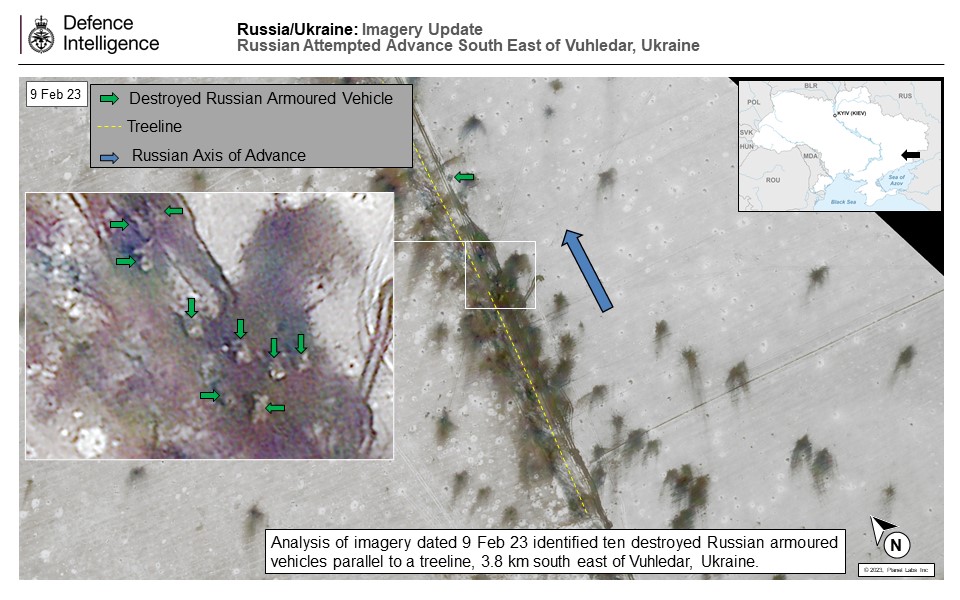
Now, the report says, the Russians use tanks primarily for fire support and long-range shooting. In particular, tanks often fire from closed positions, that is, "beyond the horizon", when the calculation does not see the target. In this capacity (in fact, well-armored and mobile self-propelled artillery mounts), tanks are most often used either in secondary areas where they do not allocate enough artillery ammunition, or where there is not enough air defense density to cover worse protected artillery pieces. It is worth noting that Andrey “Murz” Morozov, a well-known blogger and serviceman of the 2nd Army Corps of the Russian Armed Forces, criticized this practice – in his opinion, it leads to barrel wear, which will inevitably affect future clashes with new Western tanks of the Armed Forces of Ukraine.
The tank of the 291st motorized rifle regiment of the 42nd motorized rifle division fires from a closed position:
In addition, tanks play the role of a kind of "sniper" fire support – optics and fire control systems allow modern models to hit targets (for example, enemy strongholds or equipment) at a distance of up to two kilometers. Finally, the authors distinguish a kind of tank "raids" – when a single tank leaves for a firing position and opens fire on infantry during rotation ("shift changes" in positions), especially at night. For this, according to the report, the T-80BVM with their advanced thermal imagers are especially suitable.

In this capacity, the authors of the report emphasize, even the old T-62 and T-54/55 tanks , the appearance of which at the front has become the subject of ridicule in social networks, may well be used. Actually, this is already happening – according to the channel "Tanks. History and Modernity”, T-54B entered the front in the howitzer division, where they are used as self-propelled guns. Similarly, according to RUSI, obsolete tanks can be used in urban battles, where they will serve as assault guns to destroy buildings and fortifications. Due to the short distance of battles, modern vehicles do not even have a special advantage in an urban environment over tanks of the Cold War era (which, however, does not prevent them from using the first ones when storming cities, despite the risks of being hit at close range).
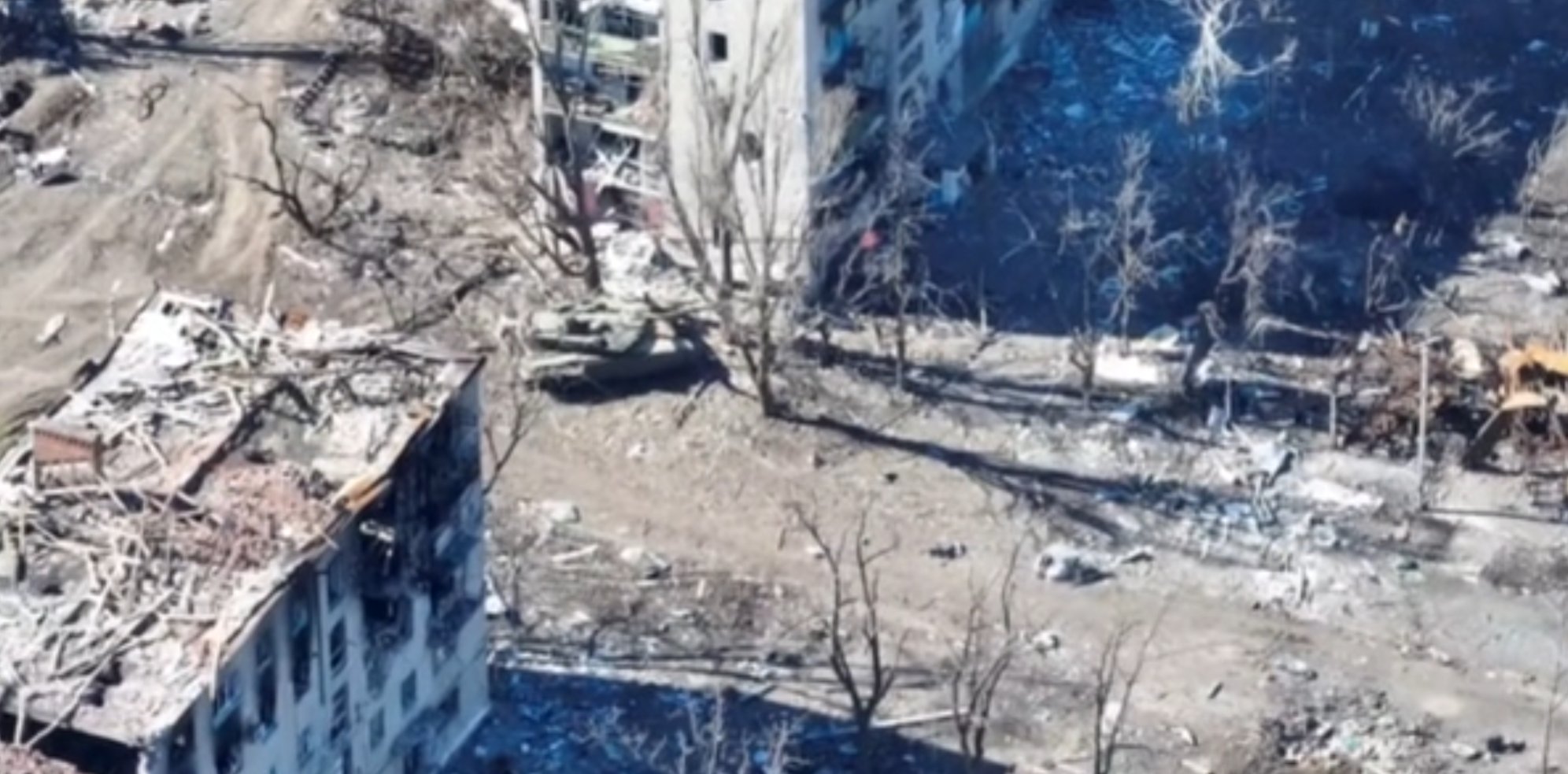
The old Soviet adage “tanks don't fight tanks” seems to work in the Russo-Ukrainian war as well. As the report says, such collisions occur very rarely, most often at a distance of less than a kilometer, and largely depend on who fires first. Ukrainian tank crews have discovered that a Russian tank can be destroyed by a shot under the turret or by breaking its track, causing the crew to abandon the vehicle more often than not. Russian tankers, in turn, quite successfully protect their tanks with additional dynamic protection, special coatings that make it difficult to detect in the infrared range (like the Cape visibility reduction system), and also modify the engine-transmission compartment in such a way as to complicate the task for some heat-seeking anti-tank weapons. In addition, Russian tanks often go on combat missions in the morning or evening hours, when they merge with the environment in the thermal range.
Trophy T-90M "Breakthrough" with a set of visibility reduction "Cape":
Finally, the positional nature of the war made it more difficult to capture tanks and other armored vehicles as trophies. The report says that there are times when serious battles unfold around abandoned tanks for the "right" to evacuate them. Most often, Russian superiority in artillery prevents the Ukrainians from towing Russian tanks from the battlefield, so they have to be destroyed so that the Russians do not get them, for example, by dropping ammunition from quadcopters.
Средства радиоэлектронной борьбы: не отличая своих от чужих
Только спустя значительное время после начала полномасштабного вторжения стало известно (например, из доклада аналитического центра CNA), что в первые дни российские системы радиоэлектронной борьбы смогли внести хаос в работу украинских средств ПВО и фактически ослепить многие радары, что позволяло российским ВКС наносить удары в украинском воздушном пространстве и сделало возможным воздушный десант на аэродром Гостомель. Сейчас такие системы продолжают работать на передовой — по оценкам исследователей, россияне размещают не менее одного комплекса РЭБ на 10 километров фронта. В основном они охотятся за дронами — на работу систем РЭБ приходится значительная часть потерь украинских беспилотников, которые составляют до 10 тысяч в месяц. Здесь стоит отметить, что ВСУ осознают важность РЭБ и активно охотятся за этими комплексами.
Отдельно в докладе отмечается, что российские средства РЭБ не предпринимают никаких усилий, чтобы отличать своих от чужих. К чему это приводит, можно прочитать в Z-каналах, где авторы жалуются на работу российской РЭБ, из-за которой зачастую невозможно поднять свои же беспилотники, чтобы навестись на украинскую артиллерию.
Кроме того, российские радиоэлектронные средства занимаются подавлением или перехватом украинских переговоров по радио, в том числе шифрованных. В докладе упоминается эпизод, когда российский штаб предупредил свои силы о готовящемся обстреле после того, как украинцы по радио запросили поддержку артиллерии. Разумеется, украинские средства РЭБ не остаются в долгу: бывший командир сепаратистов, а ныне глава «Росгвардии ДНР» Александр Ходаковский упоминает случай, когда его подразделение перехватило украинские переговоры и обнаружило, что украинцы обсуждали данные из российского радиообмена, ранее перехваченного ВСУ.
Помимо крупных и дорогих средств РЭБ, россияне используют для борьбы с дронами, например, противодроновые ружья, которые, как говорится в докладе, есть уже на уровне взводов. Впрочем, стоит отметить, что по большей части они покупаются на средства волонтеров, а на некоторых участках, например, на границе, жалуются на их серьезную нехватку .

ПВО: без адаптации к новым угрозам
В начале полномасштабного вторжения российские средства противовоздушной обороны действовали крайне неорганизованно, что давало возможность украинским ВВС и дронам поражать их на марше . Впоследствии россиянам, как пишут в докладе, удалось ограничить действия украинской авиации (отметим, что весомым исключением стали полеты украинских вертолетов в осажденный Мариуполь). С тех пор россияне постепенно приводили свою систему ПВО в порядок, однако она всё еще с трудом справлялась с новыми угрозами, например, с ракетами РСЗО HIMARS или противорадиолокационными ракетами AGM-88 HARM.

С осени 2022 года, пишут эксперты RUSI, Россия серьезно улучшила работу своих средств ПВО. Крупные логистические и командные центры прикрыты комплексами С-400 и С-300ВМ, к их радиолокационным станциям подключены ЗРК средней и малой дальности «Тор» и «Панцирь», что улучшает ситуационную осведомленность расчетов последних. Для ограничения действий украинской авиации, которая приучилась летать максимально низко, используются всевысотные РЛС «Подлет-К1». В результате россиянам удается поражать большую часть AGM-88 HARM и значительную часть ракет HIMARS. В докладе также упоминается случай, когда ракетой ПВО с расстояния в 150 километров был поражен украинский самолет, хотя он летел на малой высоте, вне зоны обнаружения большинства радаров. Серьезную опасность представляют и российские истребители Су-35С с дальнобойными ракетами Р-37, одна из которых сбила украинский самолет на расстоянии 177 километров.
Обломки ракеты AGM-88 HARM, сбитой в Макеевке под Донецком:
В докладе отмечается, что российская ПВО существенно лучше справляется с прикрытием статичных позиций, чем с защитой наступающих частей. Кроме того, российские ЗРК довольно часто открывают огонь по своим (автор канала FighterBomber и вовсе считает , что «наша ПВО — злейший и опаснейший враг для нашей авиации»). Наконец, как считают в RUSI, российские зенитчики по-прежнему тяжело адаптируются к новым угрозам. Примерами этого, пожалуй, могут служить массовое успешное применение украинцами дешевых FPV-дронов-камикадзе , а также недавний громкий дебют дальнобойных крылатых ракет Storm Shadow .
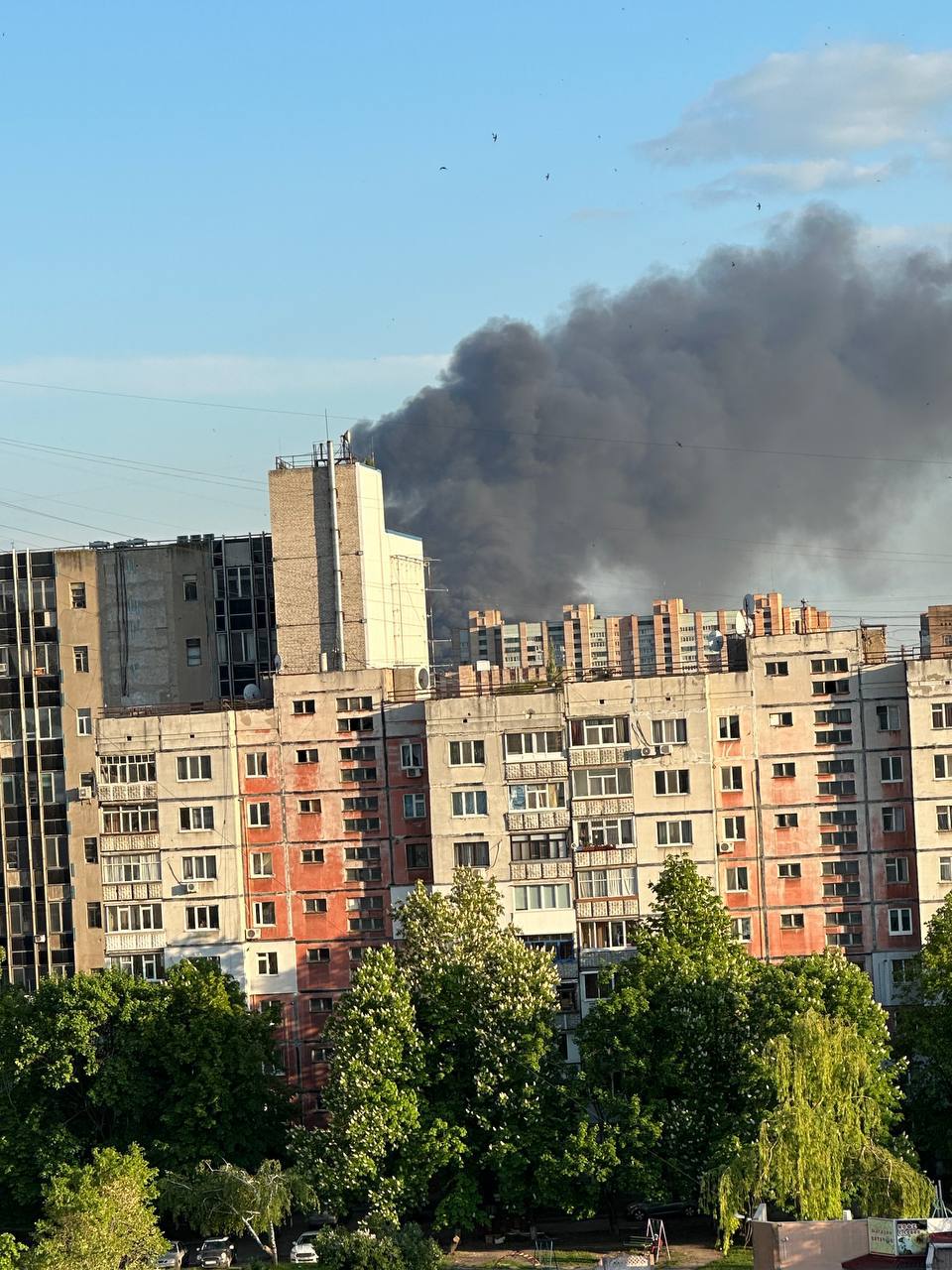
Авиация: дальние удары
Авторы доклада пишут, что самолеты Воздушно-космических сил (ВКС) РФ уже более года не осмеливаются залетать глубоко в воздушное пространство Украины из-за работы ПВО. Приоритет по-прежнему отдается ударам дальнобойными крылатыми ракетами, в первую очередь с турбовинтовых стратегических бомбардировщиков Ту-95. По приведенной в докладе оценке, российская промышленность выпускает порядка 40 ракет в месяц. Хотя каждый Ту-95 может нести от 6 до 16 таких ракет, перед большинством ракетных ударов с российских аэродромов взлетает гораздо больше бомбардировщиков, чем это необходимо. Пуски производят только некоторые из них, чтобы усложнить задачу украинским зенитчикам, а впереди ракет летят иранские дроны-камикадзе семейства «Шахед», которые должны выявить слабые места в украинской системе ПВО.
Больница в Днепре, разрушенная в результате российского ракетного удара:
Кроме того, россияне в последнее время стали широко применять авиабомбы ФАБ-500, оснащенные универсальным модулем планирования и коррекции (УМПК). Хотя они могут поражать цели на расстоянии до 70 км, в докладе отмечается, что эти бомбы не отличаются точностью (примеры этого можно найти в том числе и в Z-каналах ). Тем не менее, они довольно часто поражают как военные, так и гражданские объекты — последнее отражено, например, в этом репортаже из Сумской области. Авторы доклада считают, что данные, собранные в ходе постоянного применения доработанных авиабомб, будут использованы при доработке модулей (к которым есть множество нареканий ), и высказывают опасения, что при должной концентрации такие бомбы могут использоваться не только по тыловым объектам, но и на поле боя. Впрочем, Украине, по-видимому, есть что противопоставить если не самим бомбам, то их носителям: самолеты и вертолеты, сбитые в Брянской области 13 мая, предположительно, обеспечивали именно подобный бомбовый удар. По некоторым данным , они были сбиты из ЗРК Patriot американского производства.
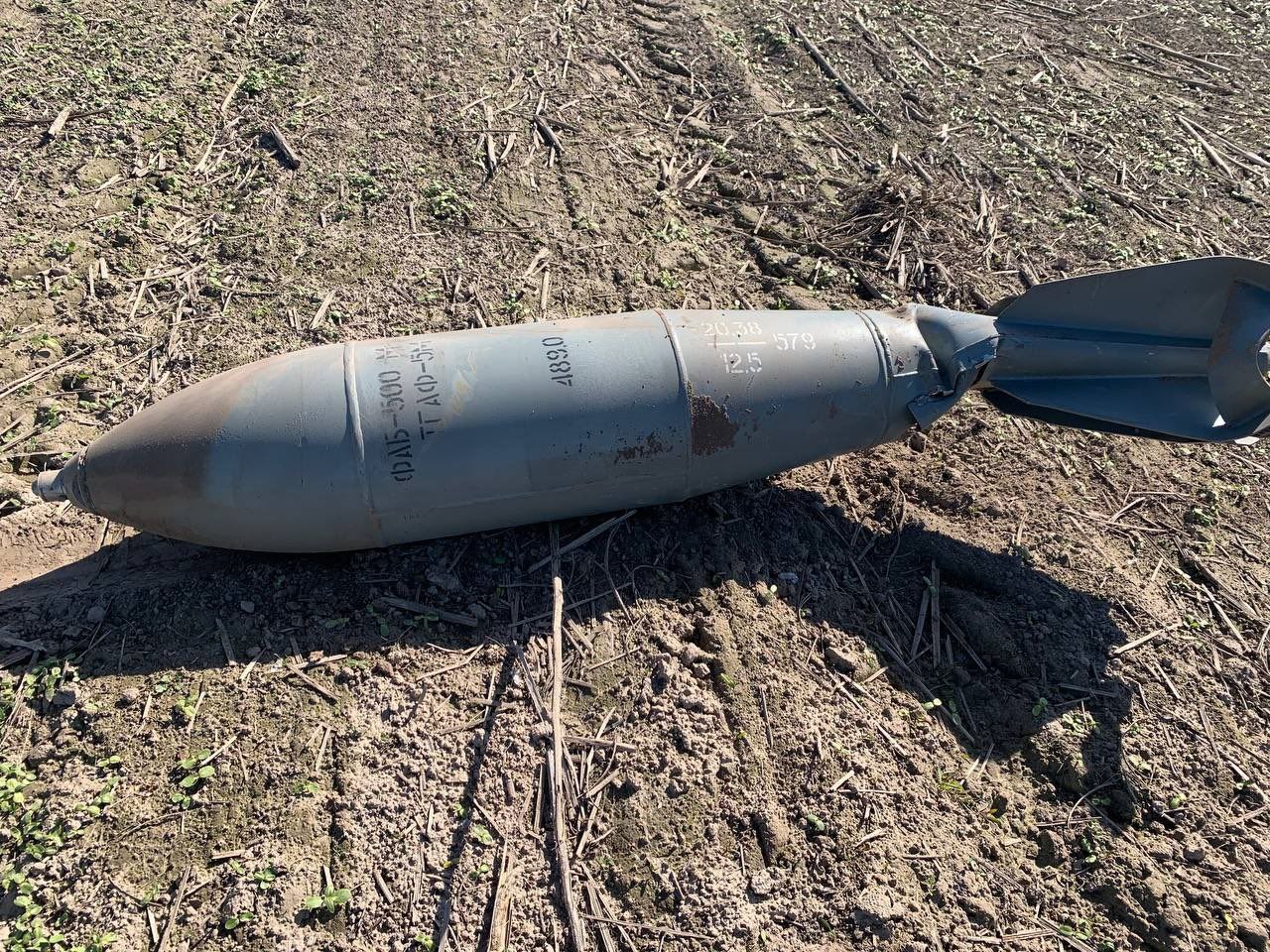
Еще одна тактика применения авиации на малых высотах — пуски неуправляемых авиационных ракет С-8 с кабрирования (так называется метод, когда самолет или вертолет задирает нос, чтобы ракеты пролетели дальше). Такая тактика на первый взгляд выглядит неэффективной, однако авторам доклада известны случаи, когда пуски ракет с расстояния примерно 12 километров по группам украинских сил, готовящимся к атаке, давали достаточную концентрацию огня, чтобы привести к срыву наступления. В докладе отмечается, что удары с кабрирования особо полезны там, где у россиян наблюдается недостаток наземных систем огневого поражения (фактически, самолет или вертолет в таком случае представляет собой «летающую РСЗО», способную оказаться в нужное время в нужном месте). Стоит заметить, что такую тактику широко применяет и украинская авиация (для чего ВСУ недавно поставили 4000 американских неуправляемых авиационных ракет Zuni).
Российские вертолеты Ка-52 и Ми-35М выполняют пуски ракет с кабрирования:
В целом авторы доклада считают, что спустя больше года полномасштабной войны российские ВКС и армейская авиация остаются серьезной силой, способной нанести значительный урон ВСУ, пусть и ценой собственных тяжелых потерь. Это должно влиять на планирование украинских наступательных операций, тем более что украинцы испытывают те же сложности с прикрытием атакующих группировок мобильными средствами ПВО, что и российские войска. По мнению экспертов RUSI, одной из самых серьезных угроз, способных существенно изменить ход войны, было бы завоевание россиянами господства в воздухе на средних высотах (например, путем подавления украинской ПВО или истощения запаса зенитных ракет).
Управление и связь: переговоры без шифрования
Удары ракет GMLRS летом 2022 года, как и в случае со складами, заставили россиян отодвинуть штабы более чем на 100 километров от линии боевого соприкосновения. Этому предшествовало, например, по данным Игоря Гиркина (он же Стрелков-Рунов), полное разрушение штаба 1-го армейского корпуса в Донецке, а также гибель офицеров штабов 49-й общевойсковой армии и 106-й воздушно-десантной дивизии. Однако, как утверждается в докладе, россиянам и здесь удалось адаптироваться: теперь штабы более распределены и соединены с передовой проводной связью, для чего используется в том числе гражданская телекоммуникационная инфраструктура Украины. Бригадные командные пункты обычно находятся на расстоянии 20 километров от линии фронта и как правило надежно защищены и находятся под землей. Коммуникации между КП бригад и подчиненных батальонов осуществляются через радиоретрансляторы или полевые кабели.
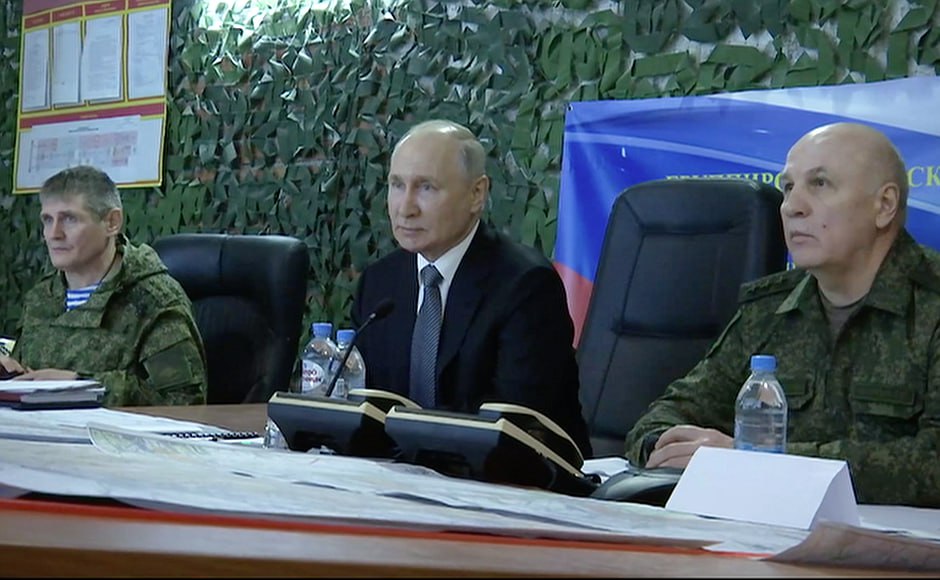
Стоит отметить, что безопасность тыловых штабов в последнее время (видимо, уже после завершения подготовки доклада) оказалась под угрозой из-за ударов ракет Storm Shadow. Например, из некролога стало известно , что 25 мая в Бердянске удар пришелся по штабу, в результате чего погиб офицер (в звании не ниже майора) Илья Ортиков. OSINT-аналитик Оливер Александер считает, что 19 мая удар в районе Мариуполя наносился по подземному бункеру , который, вероятно, незадолго до этого посещал Сергей Шойгу (Минобороны тогда сообщало , что министр посетил «передовой пункт управления одного из объединений < вероятно, имеется в виду одна из общевойсковых армий — The Insider > группировки войск “Восток“»).
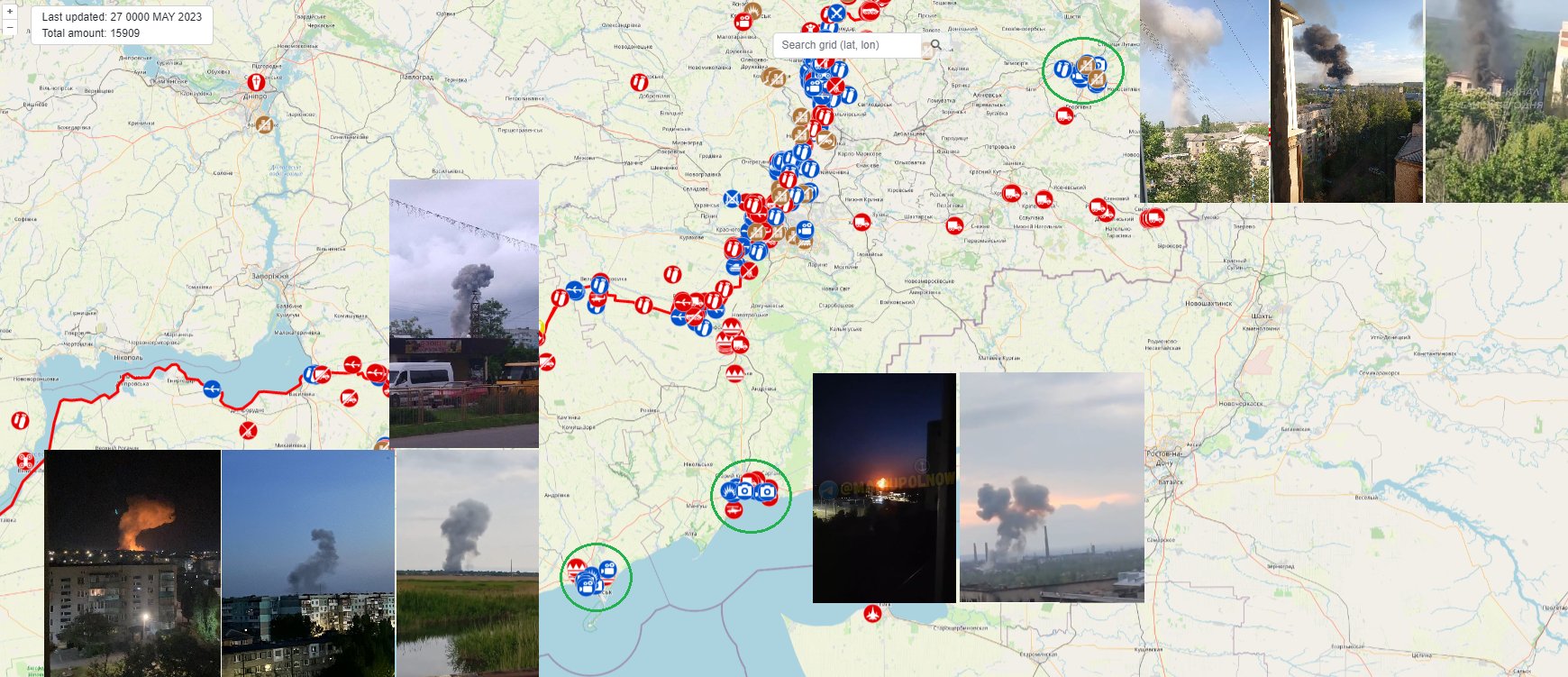
В отличие от защищенных коммуникаций высшего командования, на уровне от батальона и ниже, как выяснили в RUSI, россияне зачастую пользуются аналоговой связью, которая вообще не является шифрованной, что позволяет украинским радиоразведчикам невозбранно их прослушивать. Здесь, судя по всему, ситуация не сильно изменилась с весны 2022 года — прослушки того периода даже послужили основой для материала New York Times. В опубликованном недавно видео с участием офицеров отряда «Шторм» 72-й бригады ВС РФ командир взвода также упоминает, что связь у него имеется только внутри взвода, причем купленная на собственные средства и также открытая для прослушки. Исключение, по данным из доклада, составляют войсковые разведчики и наводчики артиллерии, которые пользуются цифровыми комплексами «Азарт» (которые должны были стать основным средством связи в войсках, но что-то пошло не так ) и «Стрелец».
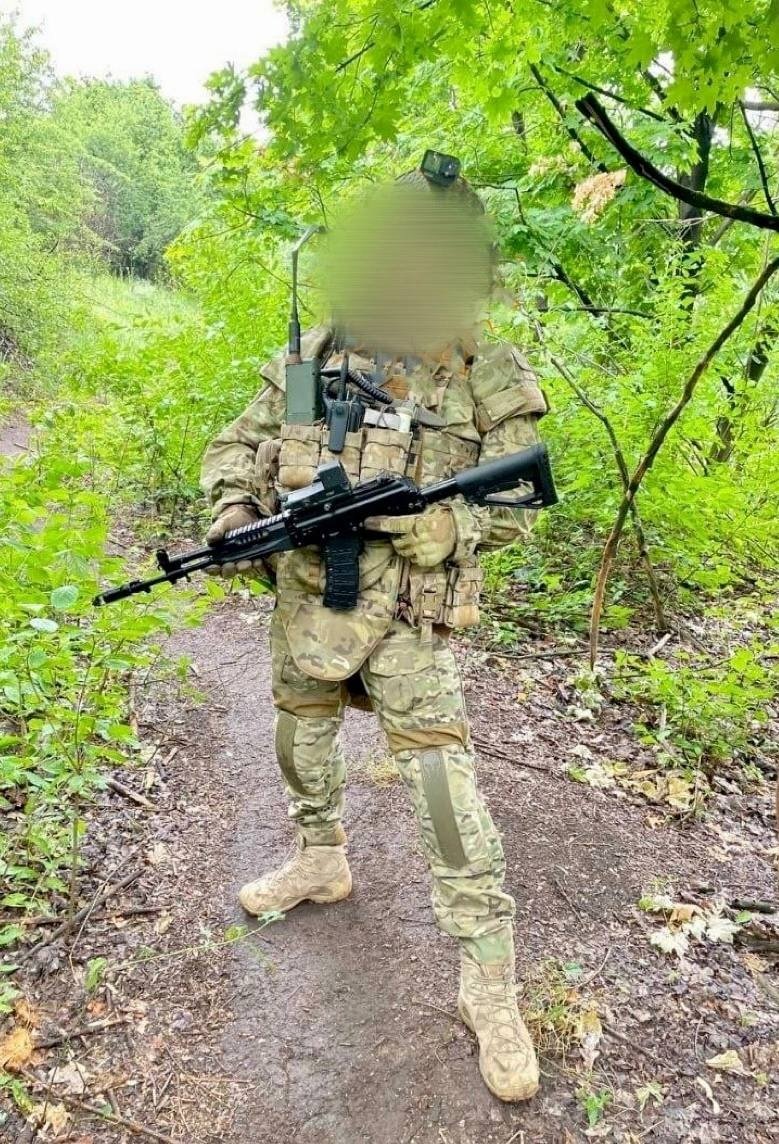
Кроме того, согласно докладу, российские войска страдают от отсутствия «локтевой» связи с подразделениями на флангах — например, россияне практически никогда не получают поддержку от «соседской» артиллерии вне ее обычного сектора огня. Общение между соседними подразделениями происходит не «горизонтально», а через вышестоящие штабы. Как пишет российская «волонтерка» Анастасия Кашеварова, рассказывая о дезорганизации на флангах Бахмута, «зачастую бригады даже не знают, кто у них слева, а кто справа, и прикрыт ли тыл».
Что нужно Украине
Отдельный раздел посвящен рекомендациям о первоочередных поставках Украине. Интересно, что там не говорится о широко обсуждаемых дальнобойных ракетах или западных самолетах. По мнению авторов, Украине необходимы, например, контрбатарейные РЛС для подавления российской артиллерии, автоматические гранатометы для усиления огневой мощи пехоты, а также средства разминирования и уничтожения препятствий для прорыва обороны. Также в докладе отмечается важность мобильных средств ПВО и борьбы с дронами, что не позволит российской авиации и артиллерии наносить удары по наступающим группировкам ВСУ.
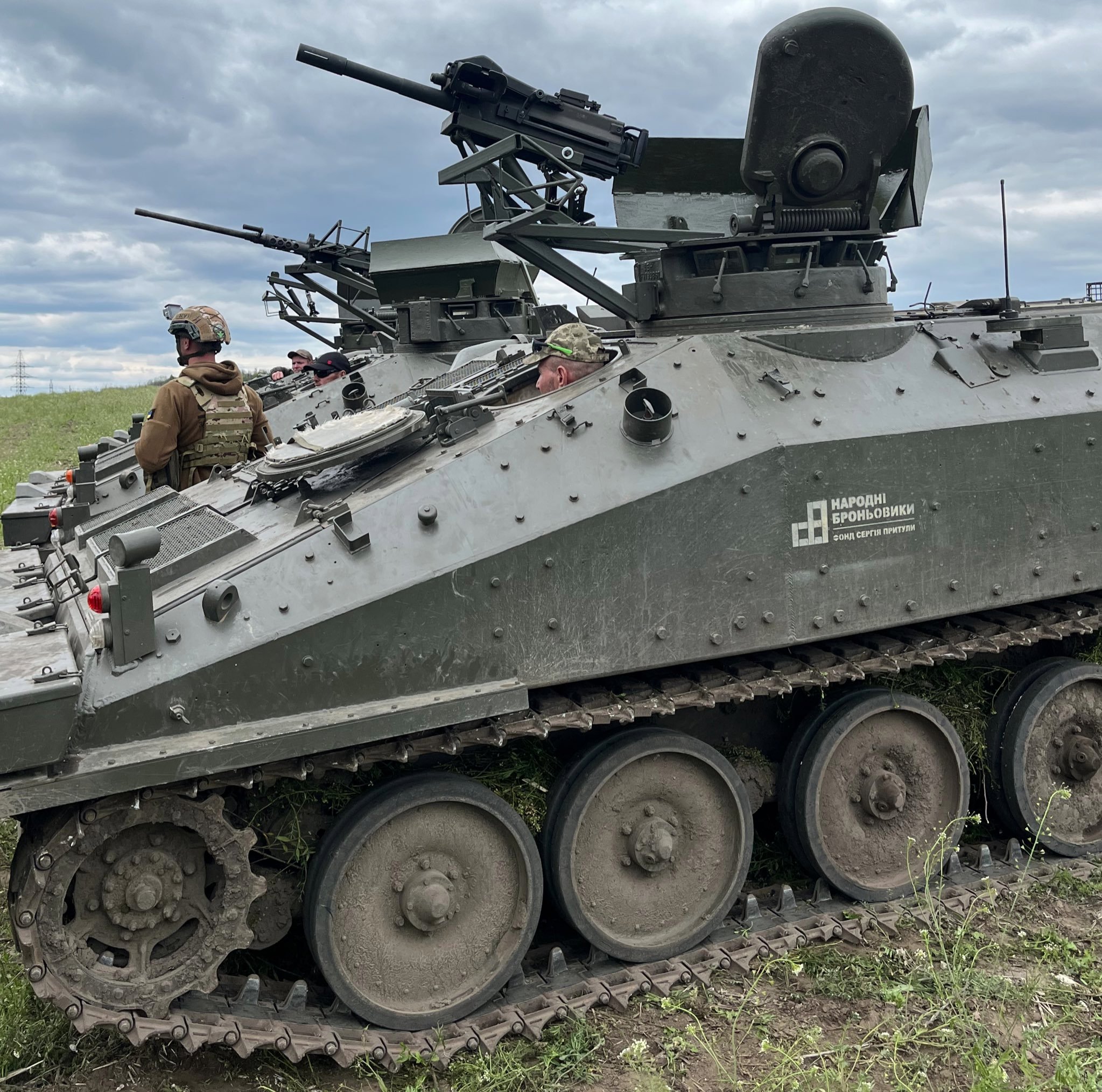
Также авторы доклада рекомендуют уделять больше внимания подготовке украинских военных в западных странах. Это тем более важно, что подготовка пополнений в самой Украине осложнена тем, что в начале вторжения украинские учебные центры сильно пострадали (а некоторые вовсе были оккупированы), а многим инструкторам пришлось отправиться на фронт (например, секторами обороны Киева командовали руководители военно-учебных центров). При этом больше внимания должно уделяться действиям в составе подразделений, а не только индивидуальным навыкам бойцов. Также важно делать акцент на обучении обслуживанию и ремонту техники, поскольку от этого зависит темп операций.
Главные выводы доклада
Авторы доклада утверждают, что комментарии действий российской армии имеют нехорошую тенденцию экстраполировать отдельные (вполне реальные) вопиющие случаи на ВС РФ в целом. По мнению RUSI, россияне продемонстрировали, что значительная часть их сил остается эффективной, смертоносной и способной адаптироваться к изменяющимся условиям. Авторы признают серьезные недостатки ВС РФ, однако отмечают, что они в основном выражаются в наступлении, а не в обороне, которую украинским силам предстоит преодолеть.
Несмотря на неожиданно высокую оценку действий ВС РФ (на которую не преминули обратить внимание в Z-каналах, при этом по большей части опуская содержащуюся в докладе критику), авторы доклада отмечают, что большинство примеров адаптации являются не элементами комплексного подхода, а скорее реакцией на выявленные проблемы и угрозы. Например, разделение пехоты на «касты» обусловлено не активным реформированием, а недостатком обученных пополнений. Кроме того, российские силы по-прежнему слишком медленно адаптируются к новым угрозам — например, появление на поле боя новых украинских средств огневого поражения всякий раз вносит хаос в работу российских сил ПВО и приводит к учащению случаев «дружественного огня».
Кроме того, россияне продолжают во многом опираться на артиллерию, и здесь адаптация, говорится в докладе, не привела к решению проблем — расход снарядов и износ стволов по-прежнему превышают возможности российской промышленности (здесь будет уместным заметить, что на «снарядный голод» жалуется далеко не только Пригожин). Если «вес залпа» российской артиллерии окажется недостаточным, то российская пехота вряд ли сможет эффективно удерживать позиции, констатируют авторы, при этом высказывая опасения, что в будущем некая третья страна может помочь России со станками и рабочими для расширения производства снарядов и стволов.
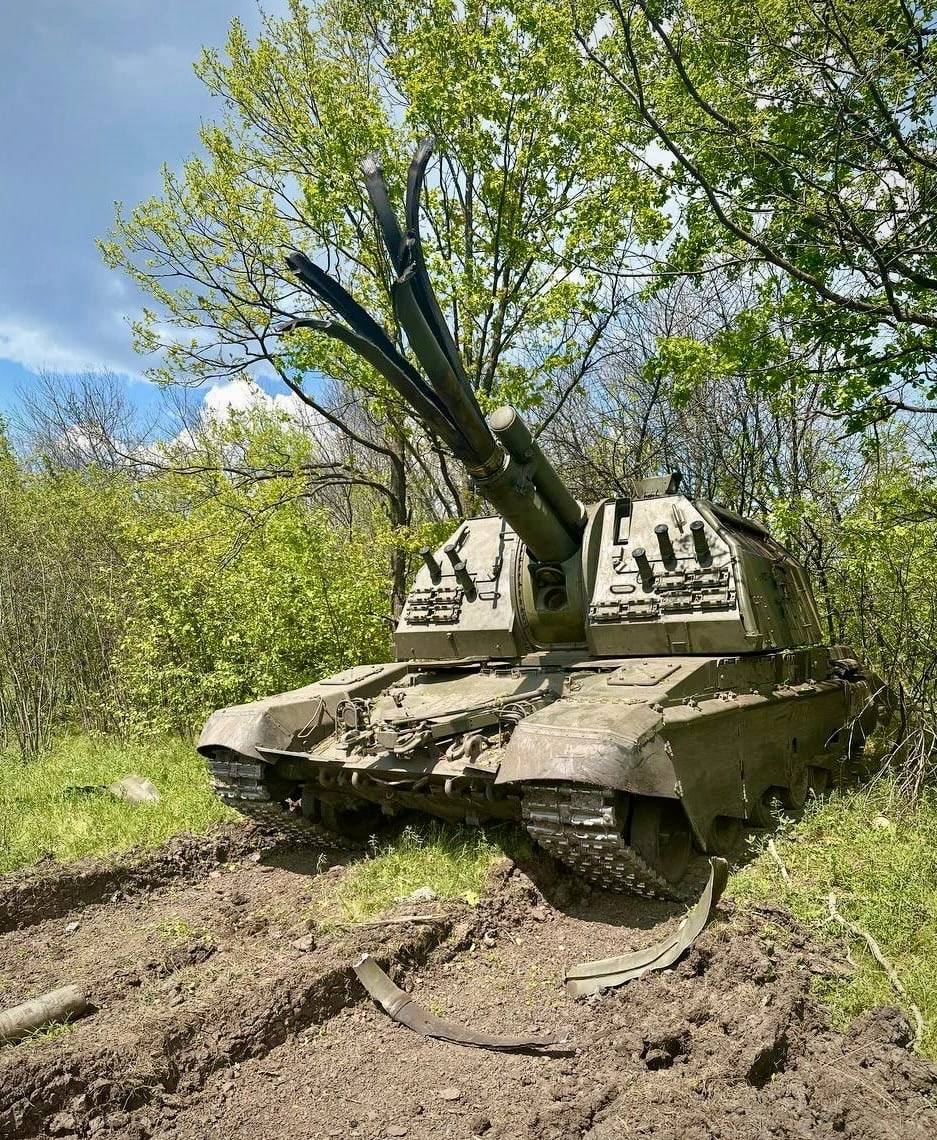
Резюмируя, авторы доклада RUSI отмечают, что хотя украинская армия владеет инициативой, ей еще предстоит преодолеть различные вызовы на тактическом уровне (в чем ей должны неуклонно помогать западные партнеры). По их мнению, описанная в докладе способность российской армии адаптироваться, пускай медленно и неравномерно, не оставляет права на ошибку и не допускает пренебрежения к возможностям противника.


